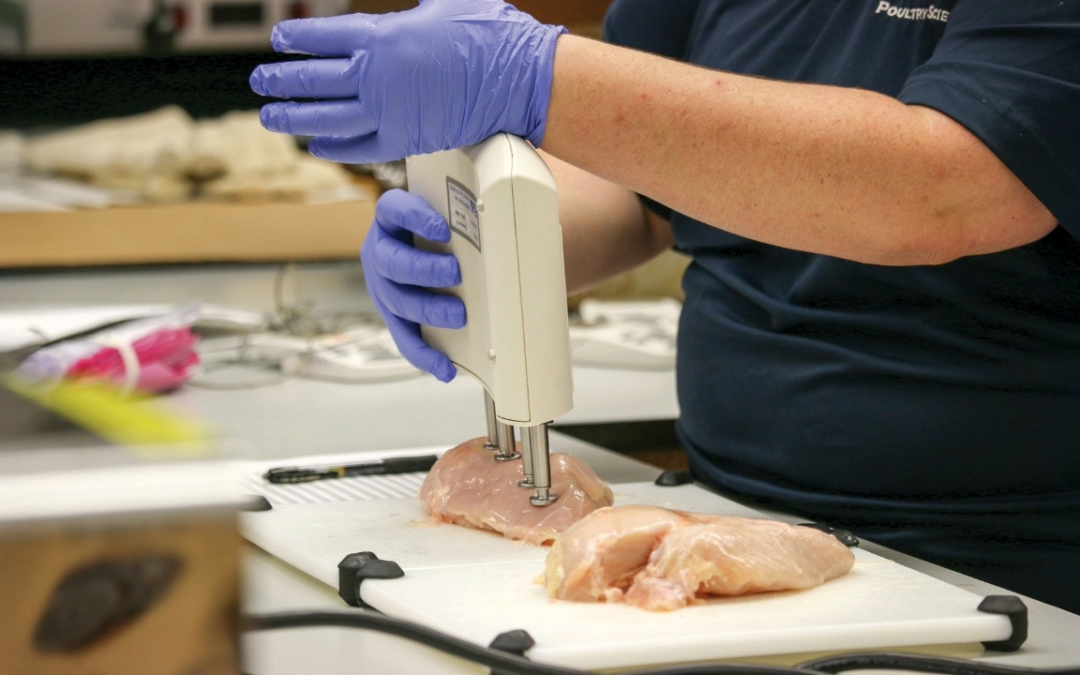By Derek Herscovici
Alabama is home to many pests, and as of 2010 it was introduced to a new one, Halyomorpha halys, a.k.a. the brown marmorated stink bug, or BMSB.
Whenever a new species is introduced, this presents the opportunity for research; for entomology grad student Savannah Duke ’15, it means defending against these intrusive insects.
The adult BMSB is shield-shaped and a dark, mottled brown. It ranges in length from 14 to 17 mm, roughly the size of a U.S. dime.
The BMSB gets its more common name from the foul smell it releases as a defense mechanism, or when crushed. It has proven to be one of the least appealing prey in the food chain. “The birds won’t even eat them,” Duke said.
Since summer 2015, Duke has been observing the bugs’ distribution and damage to corn and cotton. She spends most of her time doing fieldwork to conduct this type of research, rather than spending her time inside a lab.
Duke has had plenty of experience in working with insects since she began her undergraduate degree in horticulture. While a student worker, she was rearing insects for other peoples’ research. She also assisted a field scientist during her crop science farm internship with multinational pharmaceutical company Bayer Healthcare Pharmaceuticals.
According to her 2015-16 study, there are 19 confirmed and four suspected counties that contain the BMSB. “It’s a new invasive species,” said Duke. “It was discovered in Alabama in 2010 and only came to the US in the ’90s.”
She began the research to learn the bugs’ potential damage to cotton crops.
“It may be more of a threat to the older bolls,” she said. “It will stay and continue to feed longer than native stink bugs, and this can cause damage that would threaten yields.” The damage these insects can cause to corn also is quite severe. Duke said the BMSB can be devastating in high numbers, but the control practices farmers use against normal stink bugs have so far been effective.
The part that is new [for] Alabama farmers is knowing what to look for when scouting, and getting the populations under control in a timely manner to prevent heavy (feeding) damage.”
In order to conduct her fieldwork, the grad student did some supplemental outreach and networking with farmers and homeowners through social media, as well as with Home Grounds, Gardens and Home Pests agents from the Alabama Cooperative Extension System.
“They start coming out of hiding after winter,” said Duke. “Also, right after the corn starts growing, they start feeding and reproducing. After that they move on to cotton and then soybeans. They find other hosts plants too.”
These stink bugs turn into an urban pest in the fall. The only time you won’t see them is during the winter. Another concern with new insects are what diseases they transmit. Although certain stink bugs can transmit diseases, Duke said that to her knowledge they are not vectoring any at the moment.
When insects end up in new environments, there’s usually speculation to how they got there.
“There’s a lot of theories over how the BMSB made it to Alabama,” Duke said. “One is trade, like on a shipping container. Another one is a bluegrass festival in Tennessee, in which a lot of people came in RVs from other states.”
The native origin of these stink bugs’ DNA was traced to China. “The climate here is fairly similar to their agricultural regions,” Duke said.





